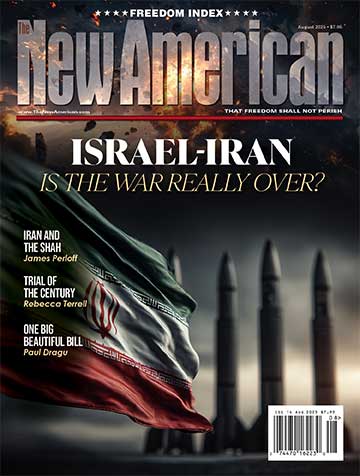
Victory goes not to the side with the best ideas, but to the side that is best able to organize people around those ideas.
The Left has demonstrated, to great effect, the reality of this principle. In part, it’s because they’re inherently collectivist while the Right is innately individualist; in part, it’s because the Left has the backing of the wealthy globalist establishment, while those putting any significant money behind the political Right tend to be controlled opposition who ensure real money doesn’t go to any conservative cause that will actually make a difference.
But no matter the reason, the end result is the same: The Left has traditionally been better at organizing than the Right, a situation that has proven to be a huge stumbling block to conservatives, who on paper should be winning due to the truth and strength of their ideas.
It’s time for right-wing activists everywhere to develop a concrete battle plan for taking power back.
There are a few important guiding principles to keep in mind as they strive to do this.
First, the focus of the Right should be on acquiring local power. It’s a sad reality, but a reality nonetheless, that you cannot gain serious political power on a mass, national scale without millions of dollars in your war chest. And most people who have millions of dollars lying around to toss into politics are compromised by the establishment.
The good news is that, just as money becomes more of a factor the higher you go on the political scale, it becomes less of a factor the lower you go. Thus, while money still remains a factor of influence in local politics, its power is much more limited when you’re dealing with municipal and county politics.
This is because the smaller the jurisdiction, the easier it is to counteract the political instruments money buys — mailers, TV commercials, radio spots, billboards, social-media ads — with one-on-one personal contact.
Second, any right-wing grassroots movement that hopes to be successful must put a high priority on constant recruitment. In the absence of big money, it is numbers that give a movement power.
This is a principle that has been proven time and again throughout history. Those who do not have significant wealth can gain political power only by joining together in large numbers. In Medieval Europe, skilled craftsmen joined together into guilds, and thereby were able to obtain power that demanded the respect of even the feudal lords. Over time, the guilds helped pave the way for expanded rights for the common man.
In the modern world, unions have played a similar role. At the beginning of the Industrial Revolution, the lone factory worker wielded virtually zero power against the factory owner. But workers eventually realized that they could carve out enough power to compete against the rich capitalists of the day if they banded together into unions.
Similar to the unions were the big-city political machines, such as New York City’s infamous Tammany Hall. The machines were able to dominate city politics despite most of their constituents coming from poor immigrant stock; the key was that the machine had to have an unbreakable hold on the immigrant community and get them to vote as a bloc.
Right-wing activists who wish to make a difference locally must learn from these various historical examples.
The first step to building such an organization is to develop a core group of activists who will serve as the leadership. It is likely that anyone starting off in such an endeavor already has at least a few like-minded associates on board.
Together, you must iron out what your policy goals are, how your group will run, how leaders will be chosen, what activities you plan to hold.
One recommendation is to organize legally as a 501(c)(4), a tax designation that allows an organization to openly promote candidates and causes, give endorsements, and even put its funds toward independent expenditures for political races (so long as such expenditures account for less than half of their spending).
Additionally, get a website, social-media accounts, logos, and flyers with which to pitch your group. Schedule a set time once or twice a month where your membership can meet to plan, coordinate, socialize, and learn.
Once you get these technical aspects out of the way, it’s time to grow your membership. The best way to start off is to go through voter lists and start knocking on doors of Republican super voters. These are voters who have voted in at least three out of the last four elections. They are the most motivated and informed Republicans in your area, and are generally the most conservative.
You can get the list of super voters, usually free, from your county supervisor of elections. There is also paid software you can get, such as WebElect in Florida, which not only gives you the data, but allows you to easily organize it into walk books, maps, call lists, and mailing lists.
Have membership dues so that you can begin growing a financial war chest. When you have some money, invest it into mailers and other advertising that will help grow your organization. Just as any successful business uses a portion of its income for marketing and advertising to continually gain new customers, you should likewise always — no matter what other activities you have going on — have a focus on gaining new members.
This point is key. Many conservative grassroots organizations, such as Tea Party groups, are never a true power in their communities because they simply don’t have enough people. Having 50 or even 100 committed activists might seem like a lot, but it really isn’t when you’re working in a county of 200,000 registered voters.
As you grow, organize events and outreach groups for the community and publicize them. Have a presence at school-board meetings, the city council, and the county commission. Have a representative of your group present at every governmental meeting. Send your representatives to meet with elected representatives and civic leaders. Make sure they know you are a force to be reckoned with.
If you properly grow your group, then you will have a significant war chest of both money and volunteers to support your candidates come election season.
Avoid the pitfall of the Tea Party, which too readily threw its support behind establishment politicians who said the right words. Make it a goal to run your own candidates — people from your group whom you know closely and whose character is backed by the volunteering they have put in.
Though nonpolitical in nature, The John Birch Society, parent company of The New American, is a grassroots organization that has successfully utilized most of the above methods for over 60 years. Click below for more information.






